Besides being prone to earthquakes and other natural disasters, Japan is threatened by its ageing, shrinking population and the possibility of regional conflict
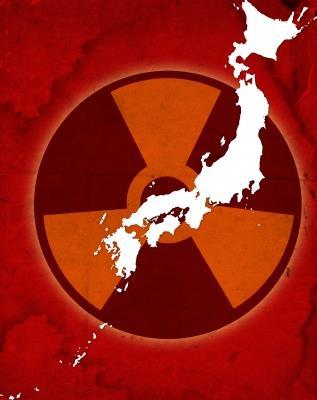
When risk and insurance professionals from a select group of Japan-based organisations gathered in Tokyo for StrategicRISK’s latest risk management roundtable, first on the agenda was a poll of the top challenges faced by Japanese corporations. Responses ranged from money laundering and fraud, through cyber risk, economic uncertainty and threats to supply chains, to product recall, reputation risk and human capital issues. However, the undoubted top threat to corporations and Japanese society in general was named as natural catastrophe risk.
Although Japan occupies a small percentage of the earth’s land mass, it suffers from a disproportionate amount of risk from volcanoes, tsunami, earthquake and other natural disasters. The 2011 Tohoku earthquake, its subsequent tsunami and the disaster at the Fukushima Daiichi nuclear power plant spring to mind, but typhoons, snowstorms and landslides are also common.
The president of RMS Japan, Yasunori Araga, says that landslides have become a particular problem following the torrential rain in recent years. “The most recent landslides occurred in mid-August this year in Hiroshima and caused damage or flooding to more than 330 houses,” he says. “Similarly, significant losses have also been incurred from winter storms, mainly in the northern parts of Japan. The snowstorms in February of this year affected central and eastern Japan, causing significant disruption to transport and industry, producing losses in excess of $3bn (€2.4bn).”
Interestingly, Japan has experienced relatively low typhoon activity in the past decade. “The last typhoon with significant losses was Typhoon Songda in 2004, which at the time created insured losses of $4.7bn,” says Araga. “But very intense typhoons with winds of category 5 can happen, such as Typhoon Vera in 1959, which, should it occurred today, would create losses in the range of $14bn-$18bn.”
Earthquake is the “primary risk” in Japan, he adds, noting that the 2011 earthquake/tsunami proved that such an event can “seriously damage life, property, infrastructure and the economy in Japan, especially when it involves a nuclear power plant”.
Although the earthquake and tsunami were the obvious causes of the damage to the Fukushima Daiichi plant, the Fukushima Nuclear Accident Independent Investigation Commission concluded that the nuclear disaster was in fact “man-made”. Both the regulators and plant operator were aware of the potential risk of a power outage in the event of a tsunami reaching the plant – and of the need for structural reinforcement of the plant – but failed to act, the commission concluded.
The 5.6 magnitude earthquake that struck 44km north-northeast of Tokyo in September served as a reminder to the country that the earthquake threat is real and that the nuclear power issue should remain front of mind. Similarly, the eruption of Japan’s second highest volcano later that month not only highlighted the country’s vulnerability to natural catastrophes, but also the risks facing its nuclear industry.
Japan’s Nuclear Regulation Authority recently approved the restart of the Kyushu Electric Power’s Sendai plant in the country’s south-west. This was seen as the first step to reopening an industry that has been dormant since 2011. However, the eruption of Mount Ontake on 27 September this year raised concerns that such a move could place the country in danger, as the plant is in a region with several active volcanic sites.
The Thai floods of 2011 also had major consequences on the operations of many Japanese corporations. Production, especially for the automotive industry on the eastern seaboard of Thailand, was particularly heavily affected. Director of Aon Japan Bharat Kannan says the key lessons learnt from the 2011 earthquake and floods relate to supply chain management. “Typically, manufacturers in Japan, particularly automotive manufacturers, operate on a ‘just-in-time’ basis, meaning that all the key suppliers and the suppliers’ suppliers are set up in a small and concentrated area,” he explains. “So, when a major natural catastrophe event [occurs], significant issues arise with the supply chain.”
Demographic shifts
Another major challenge highlighted at the roundtable was people risk. Japan is a country with “some extreme features”, according to Paolo Marini, global head of customermanagement, corporate life and pensions, at Zurich. “If we take the demographic shifts, Japan is the country with the highest longevity in the world, where people who are born today are expected to live at least until 80 if they are males and at least to 86 if they are female,” he says.
“Also, if you take the median age of the entire population, which stands today at 44 years, it is also probably the oldest country in the world. To give you a measure of comparison, the US stands at about 37. Not only are people living longer, fertility is also declining. If you combine very long life with very low fertility, which is 1.41 children per woman in Japan, this is very similar to what we see in many Western European democracies and it is well below the replacement factor, which is on average 2.1 births per woman.”
Marini points out that the population of Japan actually declined slightly in 2013, and is now “about 126-127 million” and expected to decline even further, all things being equal. “So, in 20 years’ time, we would expect the population to decrease to close to 100 million,” he adds.
Ikuo Homma, head of enterprise risk management at NEC Capital Solutions, says he is “extremely nervous” about Japan’s demographic challenges. “Even large companies will not survive without changing their own profile against changing markets and demography,” he warns.
Dean Enomoto, head of Willis Japan, says Japanese companies face risks with ageing staff and their retirement costs. “This isn’t just about HR,” he points out. “Many businesses will face strategic, financial and operational ramifications. They need to think more strategically about employee demographics, their interests and needs and align the personnel strategy to align with the business strategy.”
RMS’s Araga says the majority of large Japanese corporations have “a tendency to cultivate generalists rather than specialists, with frequent job rotation”. He says: “This is mainly based on the Japanese lifetime employment and seniority system, and it may sometimes be difficult to find highly professional staff of mature age. On the other hand, many young people have difficulties [in terms of having] an opportunity to develop their skills and behaviour as part of a permanent workforce. This is because of rapid deregulation and long depression; as a result, it is not so easy to find cultivated young staff.”
Overseas markets
The roundtable heard that Japan was actively targeting growing markets overseas as its own population aged and declined in size. Takayuki Tanaka, general manager of the insurance consulting department of Mitsui’s business engineering division, points out that this raises new risks. “Directors’ and officers’ risk keeps getting more complicated since some countries or regions started to set laws and rules – such as the US Foreign Corrupt Practices Act and the UK Bribery Act 2010 to regulate directors and officers severely. Political risk might also bring a huge negative impact to us,” he says.
Political risk is part and parcel of overseas expansion, and Willis’s Enomoto highlights the effects of current geopolitical crises in the Middle East and Russia/Ukraine. “Developments through 2014 have left Japanese global companies with growing concerns about supply chain disruption,” he says.
Takuji Urisaka, who works in the logistics and insurance department of a large Japanese general trading company, believes effective management of political risk is very important for global companies to deal with the “trends of globalisation”.
Araga says that his country’s primary geopolitical risks come from neighbouring countries such as South and North Korea, and particularly China, with which “Japan does not have a
good relationship”.
“This is mainly because of historical occurrences around World War II, but might partly depend on the attitude of the current leading politicians in each country,” he explains. “Hence, corporates operating in Japan are facing physical, emotional and economical threats from outside of Japan.” Indeed, for most multinational companies with international strategies, the state of the Chinese market is a current and future risk.
Regional tensions and disputes and political risk involving riots and strikes could negatively affect the international expansion of Japanese corporations. The Asian Development Bank’s Asian Economic Integration Monitor, a semi-annual review of Asia’s regional economic co-operation and integration, points out that Japan is the biggest foreign investor in South-East Asia, and that its companies are increasingly relocating their production chains to the region.
The increase in Japanese access to new emerging markets does not come without risk, of course, but the head of sales at Zurich Global Corporate Japan Kazuhisa Otani worries that too many Japanese firms “expand their business outside Japan, but don’t pay enough care to risks”.
Randall Wada, head of JLT’s Japan office, says that one such risk is financially catastrophic supply chain disruption. “Japanese manufacturers appear to still be struggling with their development of adequate risk financing solutions for this risk,” he adds. Sean Mooney
Engaging the board’s interest
In respect of ERM, the roundtable heard, Japanese companies are generally “behind the curve” compared to Western companies. It was suggested that wisely run Japanese firms need to put risk firmly on the board agenda, even those risks that board members are least likely to appreciate hearing about. Furthermore, acknowledging that every board member understands things in a different way is a vital step for an effective risk professional, so they can go on to employ a variety of methods to educate and change perceptions of risk in the C-suite.
Bharat Kannan, director of Aon Japan, says that the boards of publicly traded Japanese companies are “under pressure from various stakeholders and/or required by law to maintain effective oversight of risk management discipline and results within their organisations”.
The president of RMS Japan, Yasunori Araga, adds that many organisations are addressing board engagement to avoid fatal damage arising from misconduct or scandal, “but it seems unclear if strengthening of risk management has been successfully achieved in most of these organisations and is working efficiently”.
The head of JLT’s Japan office, Randall Wada, agrees that corporate governance is high on most executives’ priority lists. “As the Japanese corporate boards are made to include more external independent board members, this should provide additional impetus on corporate governance,” he says. However, he adds, known catastrophic risks are often “left unfinanced and basically ignored”, and even directors’ and officers’ insurance coverage can be “woefully narrow and inadequate compared to their global competitors’ coverage”.
“Part of the problem is likely to be structural,” Wada explains. “There is generally an absence of a HQ-based risk management function with the authority and mandate to manage and control risk. The vast majority of the largest companies in Japan manage their insurance and their insurer relationships through a wholly owned subsidiary in-house agent. Finally, rarely does the responsibility of insurance purchase fall on the corporate treasury, finance or accounting divisions. Instead, it typically falls under general affairs and is often a part of its management of important shareholder relations.”
So, is there a strengthening of risk management on the back of stronger engagement from the boards of Japanese organisations? Takayuki Tanaka, general manager of the insurance consulting department of Mitsui’s business engineering division, thinks there has been a measurable improvement, as “most listed companies have started to focus on ERM and compliance in recent years, including risk management”. But he qualifies this by saying: “From the standpoint of pure risk management, we also see that managerial members or boards are sometimes inclined/keen to just tighten the rules and guidelines in order to stand on the safe side as an organisation.”
Thought leadership
PAOLO MARINI
Global head of customer management, corporate life and pensions, Zurich Insurance Company
Japan is currently facing serious demographic challenges. Japanese men are expected to live to at least 80 on average; women until 86. This is the world’s record but, combined with low fertility, the population of Japan actually declined slightly in 2013. The number of retirees is increasing: in the 1960s, about 5% of the population was above 65 years of age; today, that figure is about 25%. Demographic decline not only affects household savings capacity but, just as importantly, presents a real threat to the country’s innovation potential.
The effects of these demographic forces are compounded by other financial and social factors to create a worrying environment. These factors include very high public debt, a high average age of retirement, an aversion to using imported labour and heavy reliance on families to care for the elderly. So the overall picture is not always an easy one, but the Japanese government has realised this and, for example, is changing the investment philosophy of its national pension fund. This is a clear signal to Japanese corporations that are suffering the effects of these same demographic, financial and social issues.
Many corporations have been derisking their balance sheets in the past two decades of low growth. But now, many corporations are deleveraging their own balance sheets to achieve lower debt levels and better liquidity. This has resulted in an upturn in investment, especially non-domestic investment as Japanese firms increase their investment abroad.
It is impossible for corporations to alter demographic trends, but there are actions they can take to better cope with financial and social challenges. These include more flexible management of their pension assets, increasing holdings of (especially foreign) shares and reducing domestic bond holdings.
In the workplace, companies should look at reducing labour rigidity with initiatives that encourage more flexible working patterns and retirement-age rules aimed at retaining older employees, but not necessarily in full-time employment.
This would enable firms to hire more younger people and potentially increase innovation.





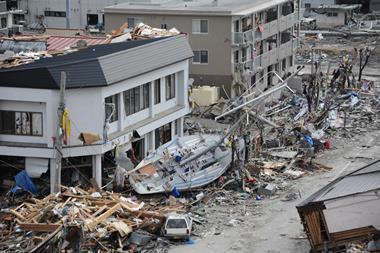

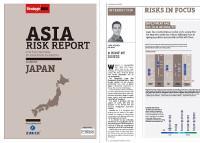
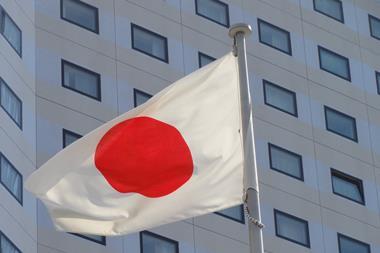

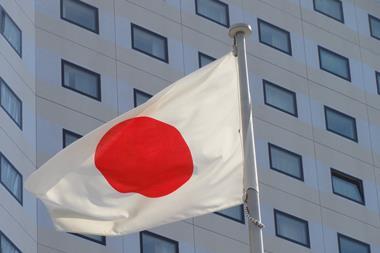









No comments yet